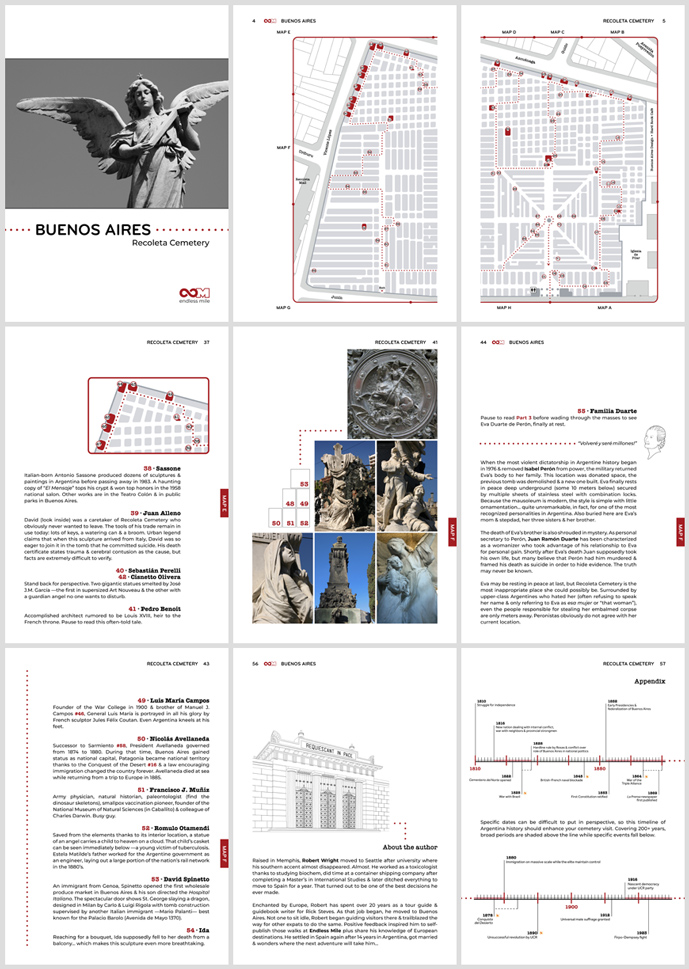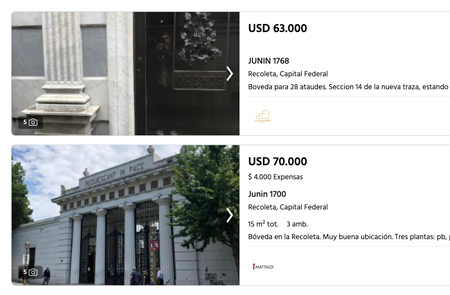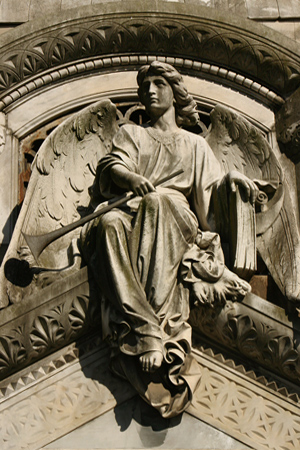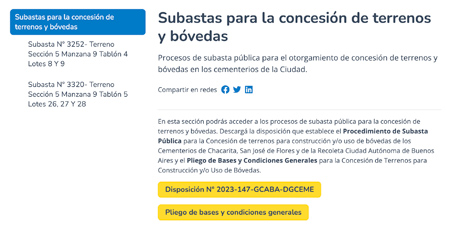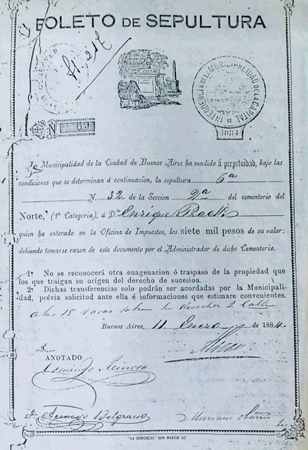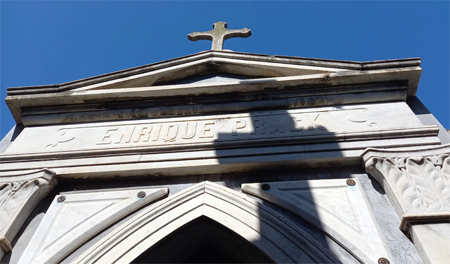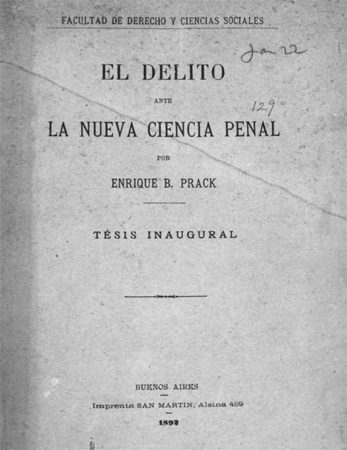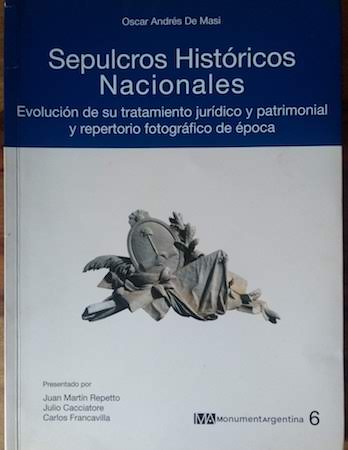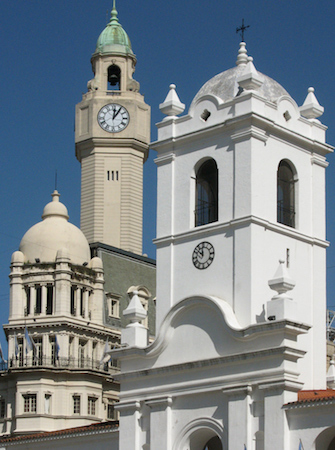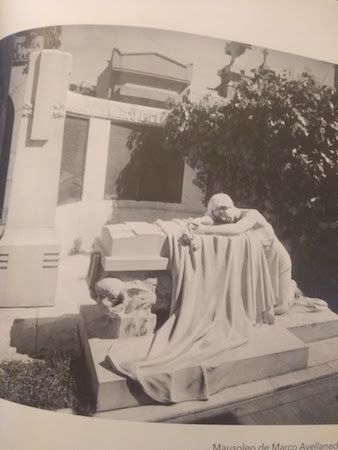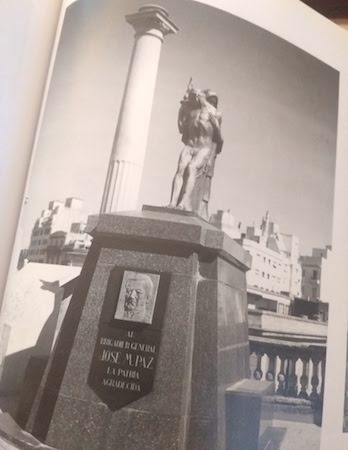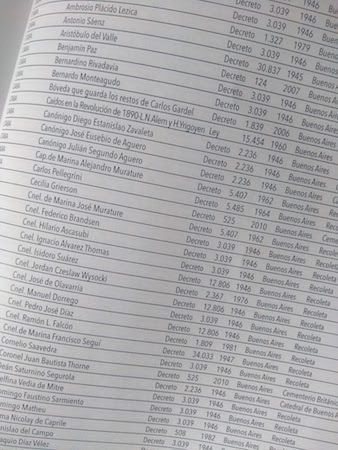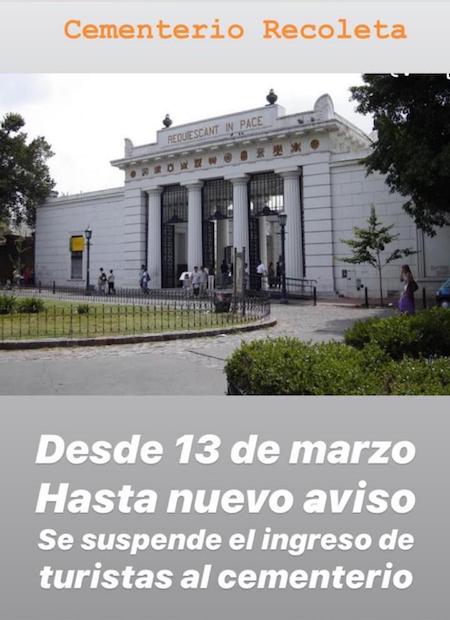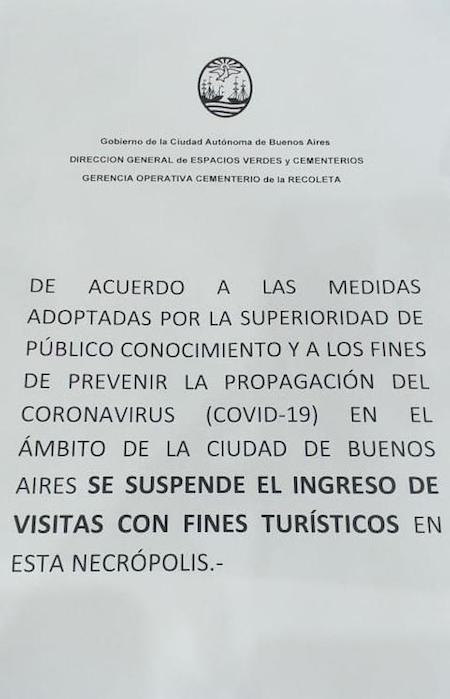Over the lifetime of this blog, we’ve seen a few vaults appear for sale online… but it isn’t common. Availability is low, transfer of titles takes time, & real estate agencies can lack experience dealing with this kind of transaction. However, more vaults than ever before have become available recently.
A perfect example is the Eugenio Mattaldi family vault, placed for sale in 2023 by his great-granddaughter. María Cristina Mattaldi works as a real estate agent, so she has the inside scoop. Her family vault stands alone, occupying the totality of its lot, which increases the value… as does its location: along the back row of the cemetery near many important historical figures like President Manuel Quintana or close to striking sculptures by Troiano Troiani on the Familia Manuel Cerini vault.
The Mattaldi vault sits on 20 square meters with its own beautiful sculpture, another big selling point (above photo). The structure has three levels: a ground floor, a first and second basement, as well as a chapel with stained glass windows and marble stairs. All that space allows storage for 30 coffins. Transfer of the deed would be through prescriptive acquisition or usucaption… basically occupying the spot with permission of the original owners.
This raises an interesting point about land use in Recoleta Cemetery: the lot itself belongs to the city government, but the family has been given permission for perpetual use. For the price of 95,000 USD, María will transfer all rights + the entire structure. Prospective buyers have to figure about 30 USD for monthly maintenance fees as well.
Sidenote: The cyclic nature of the Argentine economy could be one factor in these specific properties appearing on the market. I remember in the aftermath of the December 2001 devaluation, everyone wanted cold, hard cash. The owner of our rental apartment offered it to us for the incredible price of 47,000 USD. When I left Argentina in 2015, it was worth 250,000 USD… too bad I didn’t buy then!
Of course, grand mausoleums like that of Mattaldi are rare opportunities. For the rest of us who might want a chance to socialize in the afterlife with Argentine elite, a recent development has made burial in Recoleta Cemetery more accessible. In September 2024, public auctions for vaults will take place for the first time in 57 years.
Banco Ciudad has a section on their website with all the legalese & starting bid prices. This might become more common as a way to restore historic properties & keep them in good condition… not only for Recoleta, but also for all other cemeteries in Buenos Aires. Concessions are given for 60 to 99 years, depending on the condition of the vault or lot up for auction.
Even real estate websites like Zonaprop have taken to listing vaults… as of the publication of this post, two were available at the average price of 67,000 USD. What are you waiting for??
Information for this post was taken from two articles published on Infobae (here & here) as well as dispositions published on the official website of the Gobierno de la Ciudad Autónoma de Buenos Aires.
